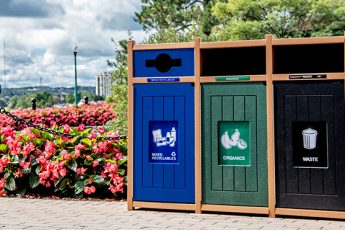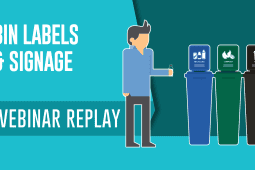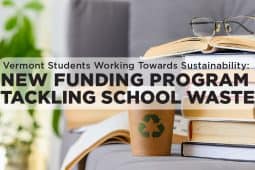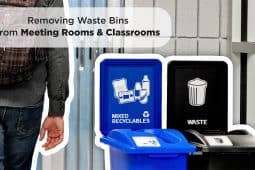Centralized Recycling Part 1: Could COVID-19 Lead the Way to a Self-Service Revolution in Recycling?
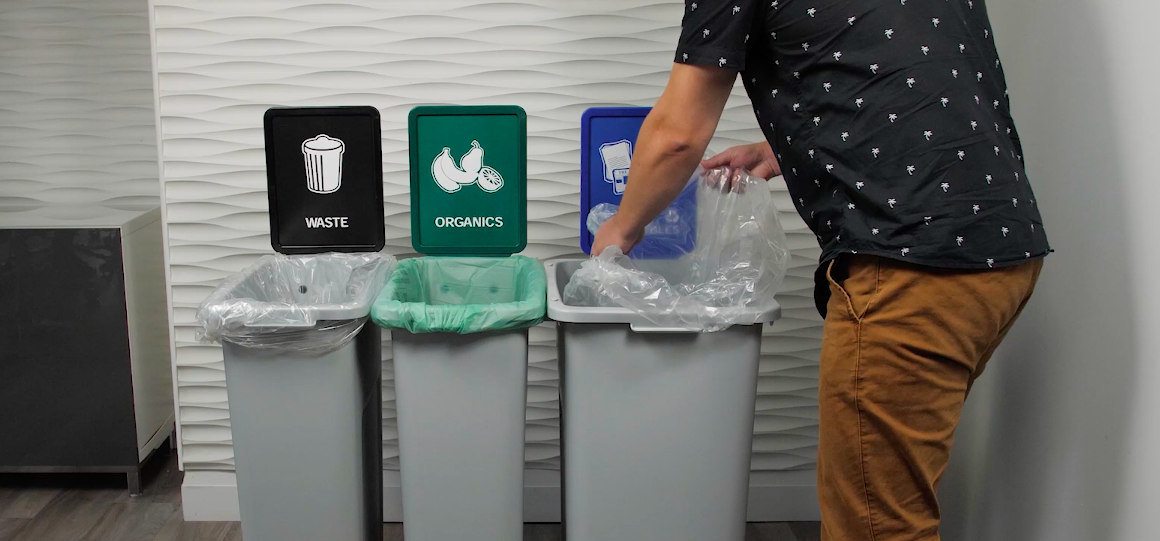
September 1, 2020 By Alec Cooley No Comments
Centralized Recycling Part 1: Could COVID-19 Lead the Way to a Self-Service Revolution in Recycling?
Change comes slowly for most college and university waste reduction programs. Over time, layers of recycling, compost, and reuse collections are grafted onto a waste management system that otherwise remains unchanged. Institutional inertia, finite budgets, and the perception of recycling as a nice-but-not-essential operation conspire to keep trash the more convenient, default option in many situations. Trash bins are ubiquitous while the network of recycling bins only expands as grants or one-time funding becomes available. Housekeepers empty deskside waste baskets while staff and faculty are expected to walk recyclables to bins in the hallway. Campus markets sell packaged food in non-recyclable containers. These and other legacy arrangements put recycling at a competitive disadvantage, sending an implicit message that recycling is not a priority. They go a long way to explain why 75% or more of the waste stream may be recoverable but schools with decades-old recycling programs still struggle to crack 40% diversion.
Changing these arrangements is often a years-long process of steady but slow progress. Adding new bins or collection routes require new resources. Changing housekeeping service levels can provoke rebellion from the office staff. Recycling managers are stretched too thin to plan and implement new collection systems. A single dismissive administrator can freeze progress for years.
And then along comes COVID-19…
Hidden behind the anxiety and wrenching decisions facing schools this fall is a rare opportunity for recycling and facility managers to reshape how waste is handled and level the field for recovery efforts.
Shifting to Centralized Collections in Offices, Classrooms, and Outdoor Areas
The waste management system that rose along with consumer culture after World War 2 emphasized making it effortless to throw things “away”. The underlying philosophy of self-service recycling is the opposite. In a world of finite resources and facility services budgets, people should be expected to assume greater responsibility for how they consume and discard items. The two principle ways this applies to facility operations is to eliminate unnecessary bins and a corresponding ‘concierge’-style housekeeping service that relieves people of the burden to walk a few feet out of their way to the remaining centrally located bins.
For decades, emptying the small decentralized trash baskets in offices and classrooms has been an unquestioned, basic housekeeping service. Simply adding a corresponding recycling basket to the routine was a hard-fought measure of progress. In recent years, however, a growing number of schools have embraced the centralized recycling model. In addition to echanging deskside andclassrooms collection arrangements, some are also cutting back the ubiquitous network of trash bins spread along walkways and other exterior areas of campus. The result in most cases is an improved diversion rate and reduction in contamination, not to mention labor and other cost savings.
How, you ask? I’ll address the labor and direct cost savings in future blogs, and focus for the moment on the potential to improve recycling. Let’s start with behavior 101. The number one thing that drives recycling (or non-recycling) behavior is convenience. If presented with a trash bin without a corresponding recycling option, an overwhelming number of people will use it regardless of an item’s recyclability. Education will motivate some people to go a little out of their way to recycle, but it is an uphill battle. The next option is to invest in a comprehensive recycling infrastructure to match recycling with trash, bin for bin. But that can be prohibitively expensive or impractical in areas with space constraints.
I can’t point to specific studies, but I would also argue that the simple convenience of deskside wastebaskets – even with matching recycling, allows people to remain disengaged as they toss items. If your focus is on the computer screen, your hand is basically functioning on auto-pilot, absent-mindedly dropping a piece of paper into whichever basket it reaches first. If a custodian sweeps the contents of those baskets away, that’s the last a person thinks about it. When office workers are alternately instructed to carry waste to centralized bins, they’re forced to actively focus their attention on the sorting decision, and therefore more likely to exercise judgment.
This is all well and good, and frankly, irrelevant for many administrators sitting in the corner office. Removing unnecessary trash bins almost inevitably seems to draw protest from someone. College administrators aren’t looking for headaches, making it hard to sell change no matter the benefits. (In one instance, a professor at an east coast school went so far as to publish a time /motion study arguing their own time was too valuable to walk the 10 or 15 feet to a centralized bin. One can only imagine the costs they must saddle their university with simply walking back and forth to classrooms!).
Opposition can also come from custodians and grounds crew. A common concern is that removing trash bins from classrooms or exterior pathways will result in more litter, adding to their workload. As I’ll discuss in future blogs, this simply isn’t true in most situations. Like recycling, litter behavior is complex and highly influenced by the context. Most schools who go this route experience no change in the amount of litter. My experience at Humboldt State University in Northern California, where I started my career, pointed to a different issue. In the late 90’s we tried reducing deskside service only to find many custodians continued to secretly empty baskets. Why? Years-long relationships with professors and department staff trumped campus policy when the personal plea came to empty them.
COVID-19 is Creating an Opportunity
These barriers are now being swept away by COVID-19. In recent conversations I’ve had with sustainability and facilities staff at a number of universities, a reoccurring theme I’ve heard is that the pandemic is forcing administrators to fundamentally rethink how they manage their facilities. Above all, facility managers are struggling for ways to free staff time to focus on disinfecting surfaces. I’ve resisted the urge toward clichés until now, but one should never let a good crisis go to waste. Now is the time for recycling and sustainability advocates to offer substantive changes that help their institutions both adapt to COVID-19 and modernize how waste is managed.
The College & University Recycling Coalition (CURC) and US Composting Council (USCC) recently conducted a survey of how campus recycling and composting programs were adjusting to COVID for the start of the fall survey. You can view the results of this survey on CURC’s website.
IN PART 2 OF THIS BLOG, we head into the field to see how COVID-19 is driving the trend toward centralized / self-service recycling on schools across the US and Canada.
CODA: Busch Systems partnered with College & University Recycling Coalition (CURC) and US Composting Council (USCC) and other organizations to publish the results of a fall 2020 survey into the long-term impacts of COVID-19 to campus waste reduction programs. Among the results found, 23% of the schools that said they provided deskside custodial waste service at the outset of COVID-19 said they had or were considering shifting to a self-service model. Read the details of this and other findings in this separate blog.
